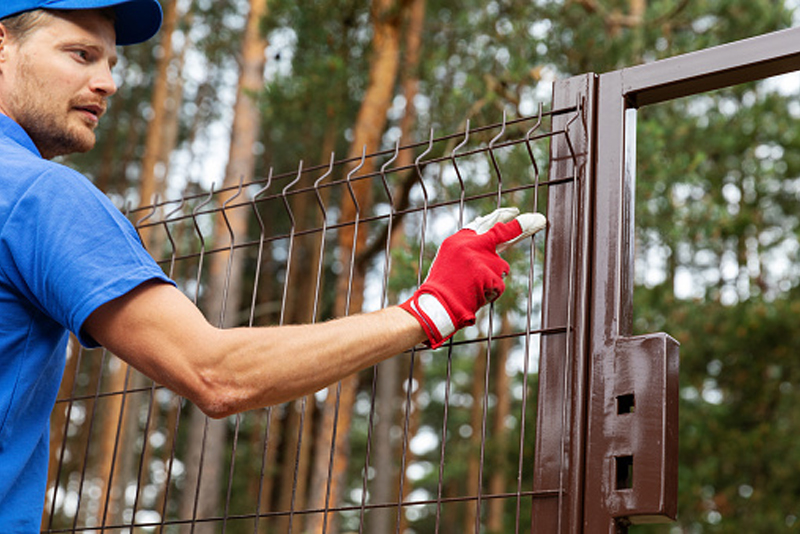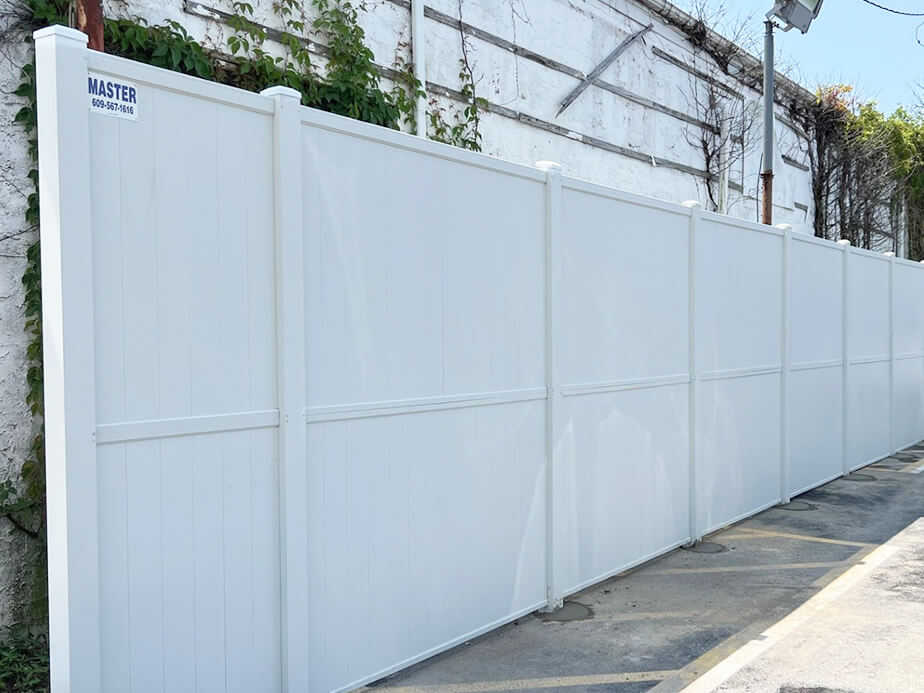Emerging Trends in Outdoor Spaces from a Experienced Deck Builder
Emerging Trends in Outdoor Spaces from a Experienced Deck Builder
Blog Article
How to Recognize Typical Problems That Need Immediate Fencing Repair Work
When it comes to preserving your fence, it is essential to identify concerns prior to they end up being bigger problems. Regularly looking for indicators of decomposing wood, leaning panels, or corrosion can conserve you time and money in the future. You may not understand how climate and parasites can compromise your fencing's stability. Let's explore the usual signs that suggest your fencing needs instant focus, so you can maintain your residential or commercial property safe and looking its best.
Indicators of Rotting Timber in Wooden Fences
Have you observed your wood fencing looking a bit worse for wear? If so, it could be time to look for indicators of decomposing wood. Analyze the base of the blog posts and panels for soft areas. That's a clear indication of rot if you push on the timber and it feels mushy or crumbles. Next off, search for discoloration or dark areas on the wood-- these often signal wetness damage. Take note of any type of peeling off paint or surface, as this can reveal the timber to additional degeneration. In addition, a poignant, musty smell can show fungal development. Don't forget to evaluate joints and links; if they're loose or breaking down, the timber underneath is most likely compromised. By catching these signs early, you can protect against more substantial damage and maintain your fence standing strong. Normal maintenance is vital to expanding the life of your wood fence.
Leaning or Tilting Fencing Panels
If you have actually observed your fence panels leaning or turning, it's vital to understand what created it. This concern might indicate underlying structural damages that requires your focus. Allow's explore the usual causes and the repair alternatives readily available to obtain your fencing back fit.

Reasons of Leaning Panels
It's frequently an indication of underlying concerns that require resolving when you observe your fence panels turning or leaning. One usual cause is inadequate water drainage; excessive water can erode the dirt around the fence posts, compromising their assistance. An additional wrongdoer can be solid winds or storms that press versus the panels, especially if they're not appropriately secured. Furthermore, the natural settling of dirt in time can create posts to change, resulting in a tilt. Insects, like termites, can jeopardize the integrity of wooden panels, creating them to lean as well. Inadequate installment practices may result in panels not being safely set, leaving them susceptible to leaning under stress. Address these concerns quickly to keep your fencing's stability.
Signs of Architectural Damages
Seeing tilting or leaning fence panels can be disconcerting, as these problems often suggest structural damage that needs prompt interest. When your fence begins to lean, it might indicate that the blog posts are changing or that the dirt around them has eroded. Pay close attention to spaces in between posts or panels, as these can also suggest instability. deck builder. Furthermore, look for fractures or splintering in the wood, which can deteriorate the total structure. If you see rust or corrosion on steel elements, it can jeopardize the integrity of the fence. Remember, neglecting these indications can cause extra severe damage down the line, so it's vital to evaluate the situation promptly and take action prior to it worsens
Fixing Options Available

Rust and Corrosion in Steel Fences
If you own a steel fence, you may see corrosion and rust slipping in over time, especially if it's exposed to dampness. These problems not just influence the look of your fence but can additionally endanger its structural stability. To recognize corrosion, try to find reddish-brown spots or patches, which indicate the steel is oxidizing. Corrosion can spread out rapidly if left untreated, weakening the fence and leading to pricey repairs.To take on corrosion and corrosion, you ought to clean the impacted areas with a wire brush and apply a rust-inhibiting primer. When the primer dries, consider painting the fence with a weather-resistant paint to protect it additionally. Normal upkeep, such as evaluating for indicators of corrosion and repairing paint as required, will certainly assist extend your fence's life expectancy. Resolving these concerns immediately ensures your metal fencing continues to be solid and visually appealing for years ahead.
Cracks and Divides in Vinyl Fence

Reasons of Vinyl Damages
Vinyl fencing is preferred for its durability, yet it can still struggle with cracks and splits because of numerous variables. One major cause is severe temperature level variations. It can weaken the product over time when vinyl broadens in the warmth and contracts in the chilly. In addition, exposure to extreme sunshine can result in UV degradation, making the vinyl breakable. Physical impacts, like heavy branches or unexpected crashes, can likewise develop splits. Poor installation or making use of low-quality products can exacerbate these concerns. Age plays a function; older plastic secure fencing is extra susceptible to damages. Normal examinations can assist you identify these variables prior to they lead to substantial issues. Take proactive steps to assure your fence continues to be strong and undamaged.
Fixing Cracks Efficiently
Although fractures and divides in your vinyl secure fencing can be concerning, resolving them promptly can stop further damages and preserve the fencing's look. Assess the dimension of the fracture. For little splits, a plastic repair service package usually consists of sticky that can bond the edges, offering a smooth solution. Tidy the area thoroughly prior to applying the sticky, guaranteeing it adheres properly. For bigger splits, you may require to utilize a vinyl patch. Cut the patch to size, apply adhesive around the sides, and press it strongly onto the split. Enable it to cure based on the manufacturer's directions. Normal upkeep and quick repairs can extend your fence's life expectancy, maintaining it looking excellent for several years to come.
Loose or Missing Out On Fence Messages
Missing or loose fence articles can weaken the stability of your whole fence framework. If you notice any type of posts leaning or wobbling, it's necessary to deal with the concern right away. Inspect for any indicators of activity, as this can lead to additional damages with time. You can quickly analyze the issue by offering each message a mild shake-- if it really feels unpredictable, it's time to take action.For missing messages, you'll require to change them immediately to maintain your fencing's integrity. When you install new articles, make sure they're safely anchored in the ground with concrete or gravel for included security. If an article is loosened, tighten it by including additional assistance or driving it deeper right into the ground.Ignoring these issues can result in larger issues, like gaps in your fence or even full collapse. Maintain an eye on your posts and remain aggressive regarding fixings!
Damages From Weather and Natural Elements
Weather and natural environments can damage your fence, bring about various kinds of damage that call for punctual interest. Heavy rain can trigger wood to rot, making it weak and unstable. Snow buildup could bend or break panels, while strong winds can root out fence articles or cause sections to lean.If you observe fractures or splintering in wooden fences, it's a sign of drying out because of extreme sun direct exposure. At the same time, metal fences can corrosion if safety finishings wear away, especially in moist or seaside areas.Inspect your fencing routinely after storms or extreme weather to capture any type of damage early. Attending to these issues rapidly can conserve you from expensive repair services down the line. Don't wait until a tiny issue becomes a my latest blog post significant one; remain aggressive and maintain your fence in top shape to preserve both performance and curb allure.
Insect Invasion and Termite Damages
It's essential to act quickly to prevent additional destruction when you discover indications of bug infestation or termite damages. Seek mud tubes along your fencing or hollow-sounding timber, as these suggest termites are at job. You might additionally see tiny openings or frass, which is termite droppings looking like sawdust. If you browse around these guys identify any one of these indications, it's time to evaluate the damage.Don' t delay up until it's also late; bugs can endanger your fence's honesty. Inspect the surrounding location for ants or beetles, as they may be adding to the issue. If you believe a problem, think about calling a pest control professional to treat the issue.repairing and validate or replacing afflicted areas of your fencing quickly not just restores its strength but also prevents parasites from spreading out even more. Keep alert to keep your residential property safe and pest-free.
Often Asked Inquiries
Just how Usually Should I Check My Fence for Damage?
You should evaluate your fencing at the very least two times a year, preferably during springtime and autumn. Regular checks aid you detect damage early, saving you money and time on repair work while maintaining your building's appearance and safety.
Can I Fix a Fencing Myself or Hire an Expert?
You can absolutely fix a fence on your own if you have the right devices and abilities. Working with a specialist warranties quality work and conserves you time, specifically for complex repairs or comprehensive damage.
What Devices Are Needed for Basic Fence Repair Services?
For fundamental fencing repair services, you'll require devices like a hammer, screwdriver, pliers, a saw, a level, and measuring tape. deck builder. Depending upon the repair service, you might likewise need nails, screws, or substitute boards
Just How Much Does Fence Repair Typically Price?
Fencing fixing costs vary widely, but you can anticipate to pay in between $200 and $1,500 depending on materials, labor, and extent of damages. It's clever to obtain multiple quotes for the best deal.
When Is the Best Season for Fencing Repairs?
The very best time for fence repair work is during mild climate, typically in spring or very early autumn. You'll avoid severe temperatures, making it simpler to work and ensuring the products established appropriately for lasting durability (deck builder). Discovering leaning or turning fence panels can be worrying, as these concerns often suggest architectural damages that needs immediate attention. Loosened or missing fencing posts can undermine the security of your whole fence framework. Snow build-up could bend or damage panels, while solid winds can root out fencing articles or create sections to lean.If you observe fractures or splintering in wooden fencings, it's a sign of drying out due to intense sun exposure. Steel fencings can corrosion if protective finishes put on off, especially in damp or seaside areas.Inspect your fencing consistently after tornados or extreme weather condition to catch any damages early. Fence repair service expenses vary commonly, yet you can expect to pay in between $200 and $1,500 depending on materials, labor, and he has a good point degree of damage
Report this page